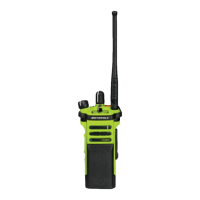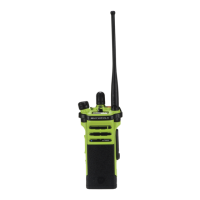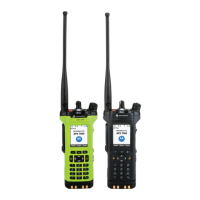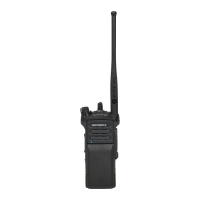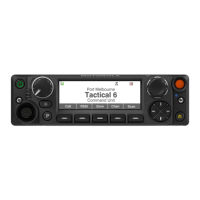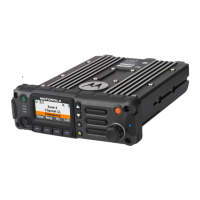Theory of Operation: Controller 3-39
Figure 3-29. CPLD Block Diagram
3.2.5 Audio
The audio section of the Controller design consists of:
• TI AIC33 voice CODEC
• TI TPA2034D1 class-D audio power amplifier
• MAKO audio sub-block
3.2.5.1 TX Audio path
The TX audio paths begin with three microphones. There are two internal microphones and one
external microphone path going to the GCAI connector.
The internal microphone paths start with two microphones that are embedded within the radio. Both
of the microphones are biased with a 4.7 V supply that is generated by the MAKO IC. This supply is
solely dedicated to biasing the microphones. The microphone signals are AC coupled into the 16 bit
TI AIC33 stereo CODEC on the MIC3R and MIC3L input pins. The TI AIC33 CODEC allows both
microphone signals to be amplified, and simultaneously sampled and converted into digital data. The
data is sent to the OMAP1710's DSP through the McBSP1 port where the DINC (dual input noise
canceller) can process the data for both microphones and provide a high level of noise suppression.
The digital data is sent to the OMAP1710 through the audio SSI (synchronous serial interface) bus
where the MAKO IC is used as the interface's clock and frame sync generator.
EMIFS
24MHz
F2 Timer
F2 Select
GCAI GPIO0
KEYLD_MISSING
KL_SWITCH
CPLD
MAKO
OMAP 1710
Processor
32kHz to OMAP
32kHz to GPS
GPIOs
GPIs
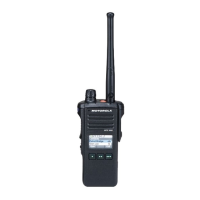
